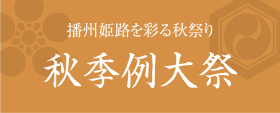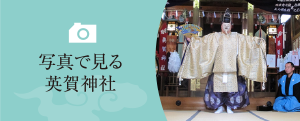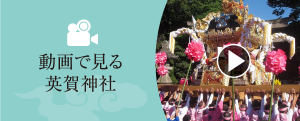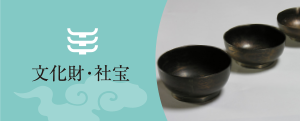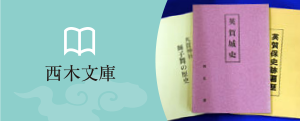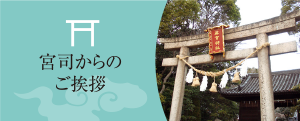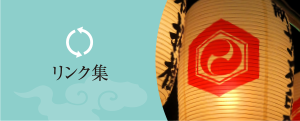Protocol
When you first arrive at a shrine, it is customary to wash your hands at the Temizusha (手水しゃ lit. “hand water place”), usually found near the main entrance.
Worship
There are two main forms of worship at a Shinto shrine, informal and formal.
- Informal (ryakushiki sanpai) 略式参拝
- The steps for informal worship are as follows:
- Make an offering at the Saisenbako (賽銭箱) donation box.
- Ring the bell Suzu (鈴) to attract the attention of the Kami (神), the deity or deities, of the shrine.
- Bow twice deeply from the waist (to about 90 degrees).
- While looking at the altar, clap your hands twice.
- Keep your hands together in front of your chest in a prayer position on the second clap. You can now make a wish or offer thanks.
- Bow once more.
- Formal (Seishiki sanpai) 正式参拝
- In this form of worship you enter inside the shrine and follow the guidance of a priest. The priest will recite a ritual Shinto prayer called Norito (祝詞). In this form of prayer the priest includes the supplicant’s personal details (name, date of birth, address, etc.) in the recital.
The Norito can be tailored to fit whatever you may wish assistance for, or a blessing upon. For example, a Norito can be for good health, the success of one’s business, the easy delivery of a child, and the avoidance of misfortune; evil; or traffic accidents.
The steps for formal worship are as follows:
- The priest will invite you into the shrine and direct you to your seat.
- While seated with your head bowed, the priest will perform Haraigushi (払い串), a cleansing ritual, using a stick with Shide (紙垂) attached to it. (Shide, white zigzag paper streamers, are a prominent feature in Shinto shrines, they are used as wards to protect and sanctify.)
- The priest will recite the Norito.
- When the Norito is complete, The priest will offer you a Tamagushi (玉串) a branch with Shide attached.
- The priest will bless you using a KamiSuzu (神鈴) – a rattle covered in bells.
- Stand up and step towards the priest. Take the branch (one hand should be facing upwards and the other downwards).
- Face the altar and bow slightly once.
- Step up to the table in front of the altar and bow slightly once more.
- Turn the branch clockwise, so the stem is facing the altar, the leafy part toward yourself, and place it on the table. (This is Tamagushi hoten (玉串奉奠) an offering to the Kami of the shrine as a symbol of your sincerity.)
- Bow twice deeply.
- Place your hands together in front of your chest. Slide your right hand back and turn it slightly so the fingers are angling upwards. Clap twice.
- Bow deeply once more.
- Step back to your original position and take a seat.
The ceremony is now complete.
Amulets, Ofuda and Ema
- Amulets (Omamori) お守り
- There are several types of amulets available from a Shinto shrine. Amulets are portable and used for personal protection. The amulet you chose would be based on your particular needs. For example, there are amulets for good fortune; prosperity; and protection from traffic accidents.
- Ofuda
- While amulets can be carried about with you, Ofuda are kept in the home, typically on a Kamidana (神棚, lit. “god shelf”), though they can be kept on any shelf or in the Tokonoma (床の間) the part of the traditional Japanese home used for seasonal displays, such as the Hinamatsuri (girl’s day) dolls.
The Ofuda should be placed facing south – Shinto shrines are typically built facing south.
It serves as a direct link to the shrine and praying at the Ofuda is essentially the same as praying at the shrine. Aga shrine has the equivalent of an Ofuda for Ise shrine in the form of a large stone monument. It can be found in the eastern section and prayers made here are directed to Ise shrine.
Praying at the Ofuda, rather than visiting the shrine, is convenient for those with busy home and work lives.
- Ema (絵馬, wish cards)
- There are two sizes of Ema. The small wooden Ema you can obtain from the shrine. You write your name and what you are wishing for on the back, and hang the Ema on the Emakake (絵馬掛け, wish shelf) at the shrine.
The large Ema can be seen in the Haiden (the front section or outer sanctum) of Aga shrine, they are the paintings which adorn the ceilings in front of the donation box.
In the past it was traditional for villagers of the area to donate horses to a shrine. As time passed this custom changed to the donation of pictures of horses, hence the kanji for Ema (‘e’ 絵 “picture” & ‘ma’ 馬 “horse”). The subject matter of the pictures gradually changed from horses to that of famous samurai, portrayals of autumn festivals, historical events, and characters from the Chinese calendar (Rat, Ox, Dragon, Tiger, Snakes, etc…).
These large Ema are donated each year by people in their Yakudoshi (厄年 bad luck year), for men this is their 42nd year, women their 33rd. To ward off the misfortune of the Yakudoshi they work at a shrine’s Yakujin festival(厄神祭) and raise money to commission a large Ema for the shrine.
Some customs are unique to individual shrines and Aga shrine is one of the few shrines with a collection of these large Ema.
History
The earliest record of Aga shrine comes from the Heian period (794-1185 A.D.). No one knows exactly how long a shrine has been on the present site, but the shrine is at least 1300 years old.
The premises of Aga shrine was part of Aga castle which was destroyed in the 16th century by Hideyoshi Toyotomi (豊臣 秀吉, a famous general who unified Japan).
A mud wall is all that remains of Aga castle and you can see it at the northern end of the shrine.
Autumn Harvest Festival
Aga shrine’s main festival is the autumn harvest festival. Every year the local residents bring out the Yatai (屋台, a type of portable shrine) and carry them through the shrine grounds and into the outer sanctum (Haiden) of the shrine itself. A unique feature of Aga shrine is that it is built up off the ground, most Shinto shrines are built at ground level, this makes entering the shrine with the Yatai extra challenging.
Once every 25 years, Aga shrine brings out the Mikoshi (神輿). A Mikoshi is a small portable shrine, used to carry the Kami of the shrine through the surrounding neighborhood. While people are free to ride and climb upon the Yatai, the Mikoshi are solely for the use of Kami.
Kami (神, Gods)
Shintoism is a polytheistic religion, there are many different gods and each is responsible for different things. There is no ranking system for the different Kami, as all are part of the whole and therefore necessary. Similarly there is no ranking system among the Shinto shrines. While Ise shrine is considered especially holy on account of being the place where Amaterasu (the sun goddess) resides, it is not ranked above other shrines.
- Aga Shrine’s Kami
- Aga shrine pays homage to ten of these Kami. Aga shrine’s Kami can be found throughout the shrine’s grounds. On the western side, facing eastwards are two small shrines for Bentensha and Itsukushimasha. At the northern end of the shrine property (to the rear of the main shrine building) are three more shrines, these are for the Kami Ichinomiya, Shiogama, and Kotohirasha. The remaining five Kami can be found within the main shrine building.
- Five Primary Kami
- Aga shrine has five primary Kami, housed within the shrine’s main building. They are Agahiko, Agahime, Tenjin, Honda Wakenomikoto, and Kasuga.
- Agahiko & Agahime
- Agahiko and Agahime are the Kami responsible for the creation of the Agaho area. All Shinto shrines are built for the spirits of the local area, and every shrine has unique Kami in this respect. Shinto priests attend to the area under the protection of these Kami. For example when someone wishes to build a house, they ask the priest from the local shrine to bless the land, so the Kami of the area will look favorably upon their new home.
- Tenjin
- Tenjin is the Kami of learning and scholarship. It is from Tenjin that Aga shrine’s secondary name “Aga Tenmangu” is derived. Tenmangu is a title given to shrines with Tenjin in residence. The symbols of Tenjin are the cow and the plum tree. Two nade ushi (撫で牛stroking cows) can be found on either side of the main entrance to the shrine. Rubbing the cow’s body is considered to be beneficial for the corresponding part on your own body. For example if you are suffering knee pain, you would rub the matching knee on the cow, or if you wished to have a clear head to aid your study for an exam you would rub the cow’s head – as this Tenjin’s specialty, you will find the cows’ heads have been well rubbed.
- Honda Wakenomikoto & Kasuga
- The last two Kami that are housed in the main shrine deal with the avoidance of misfortune. Honda Wakenomikoto protects from general misfortune, while Kasuga deals specifically in the avoidance of traffic accidents.
Objects of Worship (Goshintai, Goshinboku)
Every Shinto shrine has sacred items (goshintai) and a sacred tree (goshinboku). These sacred objects are considered to be places for the Kami of the shrine to dwell.
Depending on the shrine the objects could be anything from a rock, to a mirror or sword. Aga shrine’s goshinboku is the Nagi (竹柏), a slow growing, hardwood tree that favors warm climates – it can be found primarily in the west and south of Japan. Aga shrine’s Nagi can be found on the eastern side of the main building. It was declared a domestic heritage object in 1937, and when it died it was over a thousand years old. Two new Nagi seeded from the original now grow beside it.











